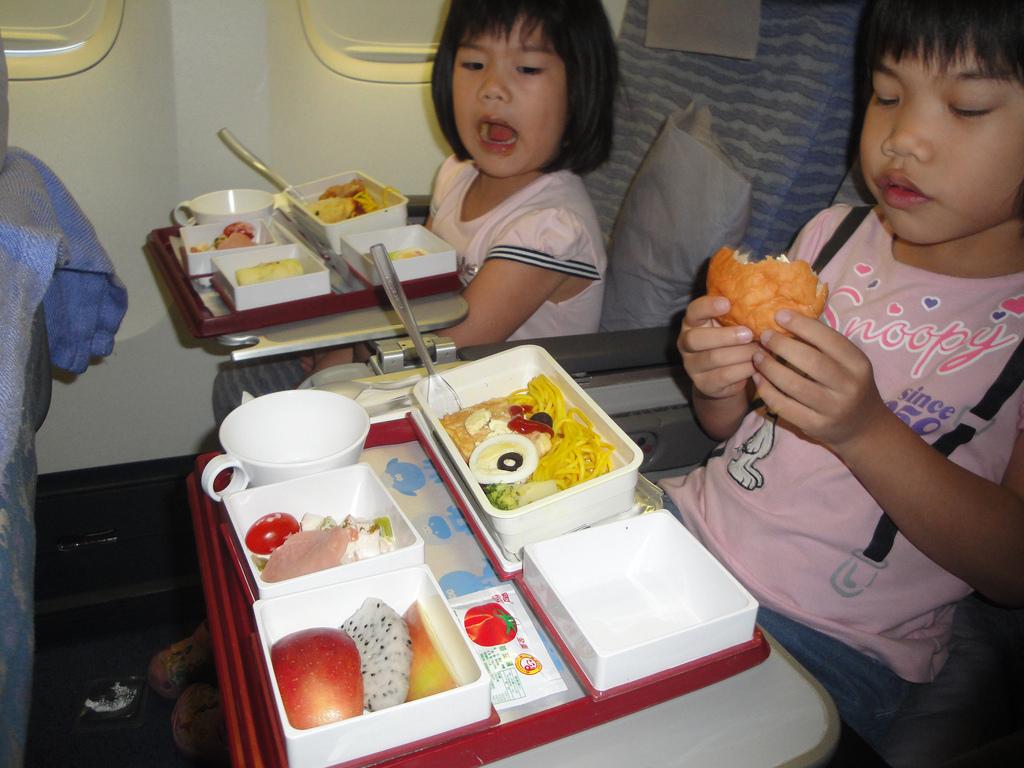Current safety standards for carrying babies and children on flights in Australia have barely changed since the 1920s and could be putting kids in danger, says a Civil Aviation Safety Authority (CASA) discussion paper.
Part of a broader review process, the document dubbed Carriage of Infants and Children, says that infants sitting on their parents’ laps and even children with their own seat, secured by a lap belt, may be more likely to be hurt during an accident.
Written by CASA’s Airworthiness and Engineering Standards Branch, the report says that even though child restraint systems in other forms of transport have improved in leaps and bounds over the decades, the way children are secured on Australian aeroplanes has, “not changed significantly since the beginning of passenger carrying flights.”
“The minimum standards of restraint currently offered to infants and small children are lower than that offered to adults,’’ the CASA paper said.
The document appeals for both public and industry views on how children and infants are strapped-in on flights, with the potential to change legislation within two years. Submissions close on September 11.
One key focus for CASA is “multiple occupancy” seats, where children share a seat or sit on an adult’s lap. One option being canvassed is children requiring their own seat, where no child restraint is used.
A CASA spokesman said Australia was now the only country in the world where two children were allowed to share a seat.
“We’re talking about a small, general aviation aircraft – only where manufacturers say you can do it – not air transport aircraft, [like] A380s or your 737s,” the spokesman said.
Research from the UK Civil Aviation Authority in the 1990s found children sharing a seat were at greater risk of sustaining head, abdominal and other bodily injuries.
While two children sharing a seat is a rare, if not almost inconceivable, event for most parents, the practice of saving $2,000 for an extra seat to London by holding an infant on your lap is far more common.
European and Australian airlines do not allow infants to sit on an adult’s lap wearing a single seat belt wrapped around both of them, because of the proven risk to both, they do allow an extra loop belt to be clipped around the child and threaded through another loop attached to the adult’s seatbelt.
However CASA’s discussion paper points to limited accident history from the UK showing that even children wearing a loop belt – as well as the person they’re sitting on – can sustain more severe injuries because parent and child are in each other’s “survival space”.
Yet parents paying for a separate seat for their offspring my not be improving their child’s flight safety.
“Whilst in the last 10 years no infant or child fatality has occurred in Australia due to multiple occupancy restraint methods in survivable accidents, serious injuries have occurred to small children using lap belts,” the report says.
“For infants and small children, an aircraft seat belt may not be a much more appropriate form of restraint,” it added.
A CASA spokesman told Government News that using a car seat or bringing a harness might be the best option, although the aim of the paper was to generate discussion, not to dictate.
“We have been recommending for some years that you should purchase a separate seat and ask the airline to fit an appropriate, approved child restraint seat but there are issues: paying for the extra seat and getting the airline to approve and fit the child restraint,” the spokesman said.
He said parents were sometimes put off from bringing a bulky car seat with them to the airport, especially if they were concerned cabin crew might refuse to fit it.
These fears had been alleviated by newer car seats which did not have the top-tethering system and so could be used on board. These had stickers on them which said they conformed to Australian and New Zealand Aviation standards.
A CARES flight harness, which is far more portable than a car seat, could also be used. These flight harnesses are suitable for children aged one to five, weighing 10kgs to 20kgs and up to around 102cm tall,
Worryingly, the report noted that some aircraft operators and passengers were, “unaware of the appropriate methods of restraint for infants and small children” and added that appropriate methods changed multiple times as children grew.
“Some perceptions of safe restraint employed by operators have been proven by research to be inappropriate and dangerous. Sometimes these situations arise out of a lack of guidance material or by out-dated regulations.”
Civil-Aviation-Safety-Authority, CASA, Qantas, Jetstar, Virgin, child-safety, airlines, aviation, regulation, UK-Civil-Aviation-Authority, seat-belts, child-restraints, Frequent-Flyer-Points
http://www.casa.gov.au/scripts/nc.dll?WCMS:STANDARD::pc=PC_102099






Good to see that finally there is information and discussion through public media for the travelling public. Airline operators will eventually need to step up and accommodate the growing demand for carriage of babies and toddlers in specifically approved restraint devices contained within their own seat. The cost of a seat for such a purpose must become affordable for parents wanting to do the right thing for their children. Education of airline ground staff, cabin crew and the travelling public is long overdue in Australia. There are informed and dedicated individuals who have for many years been attempting to raise the profile of child restraint in this country. Perhaps in light of no fatalities or severe injuries the powers that be have been too paralysed to make any positive/pro-active moves towards preventing our smallest passengers, with no voice of their own, from being hurt or worse.